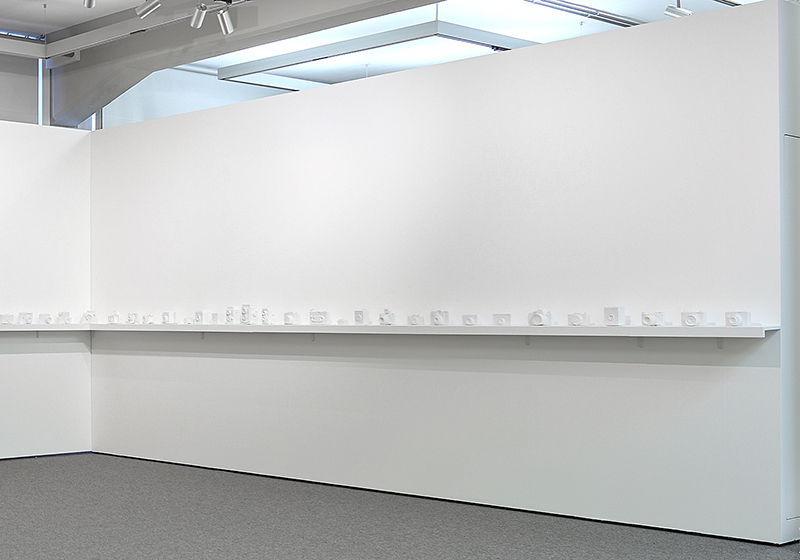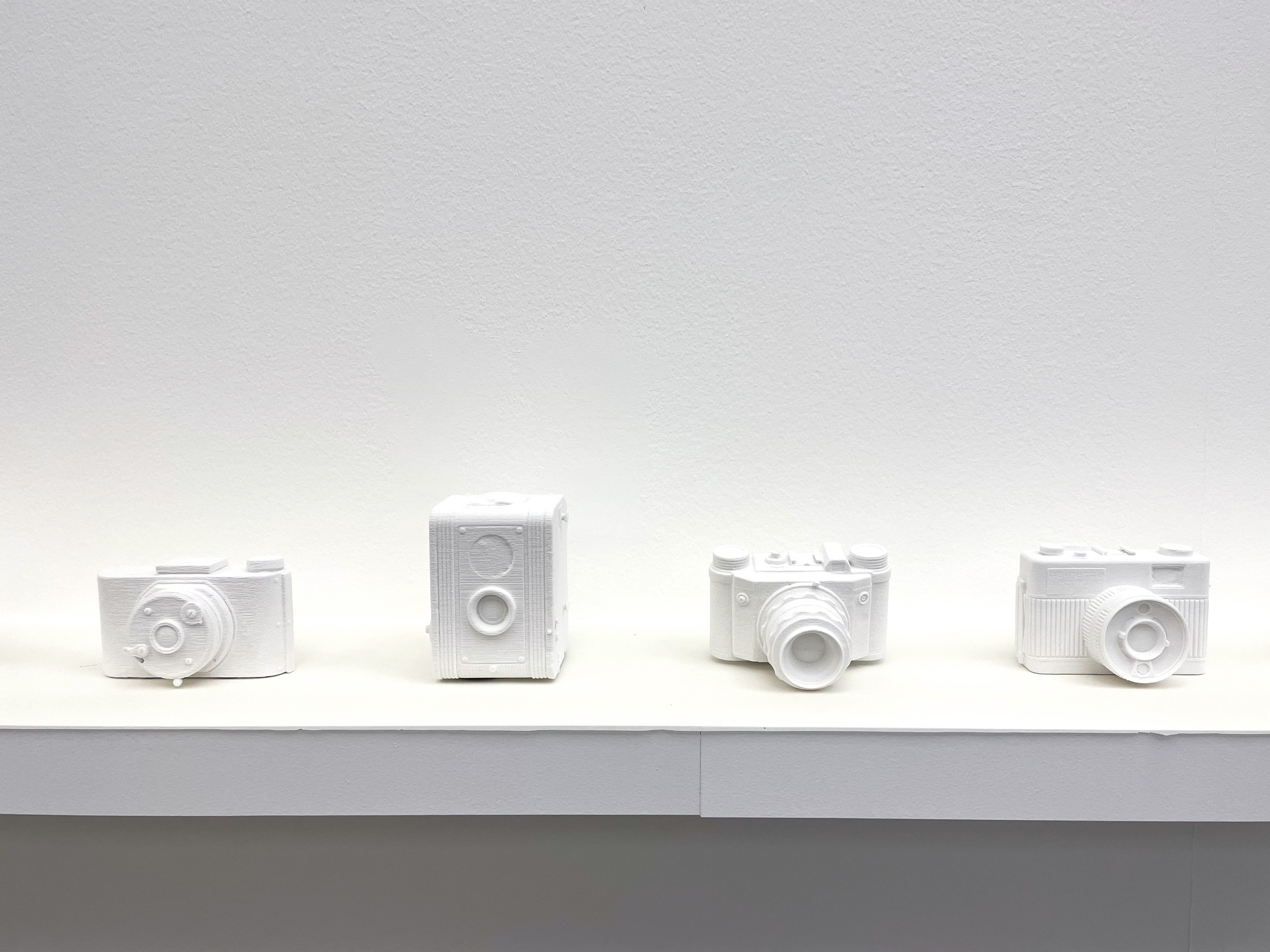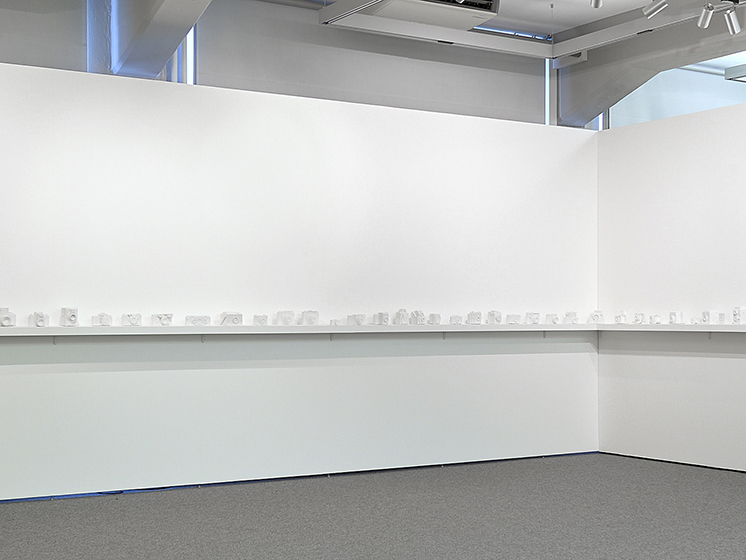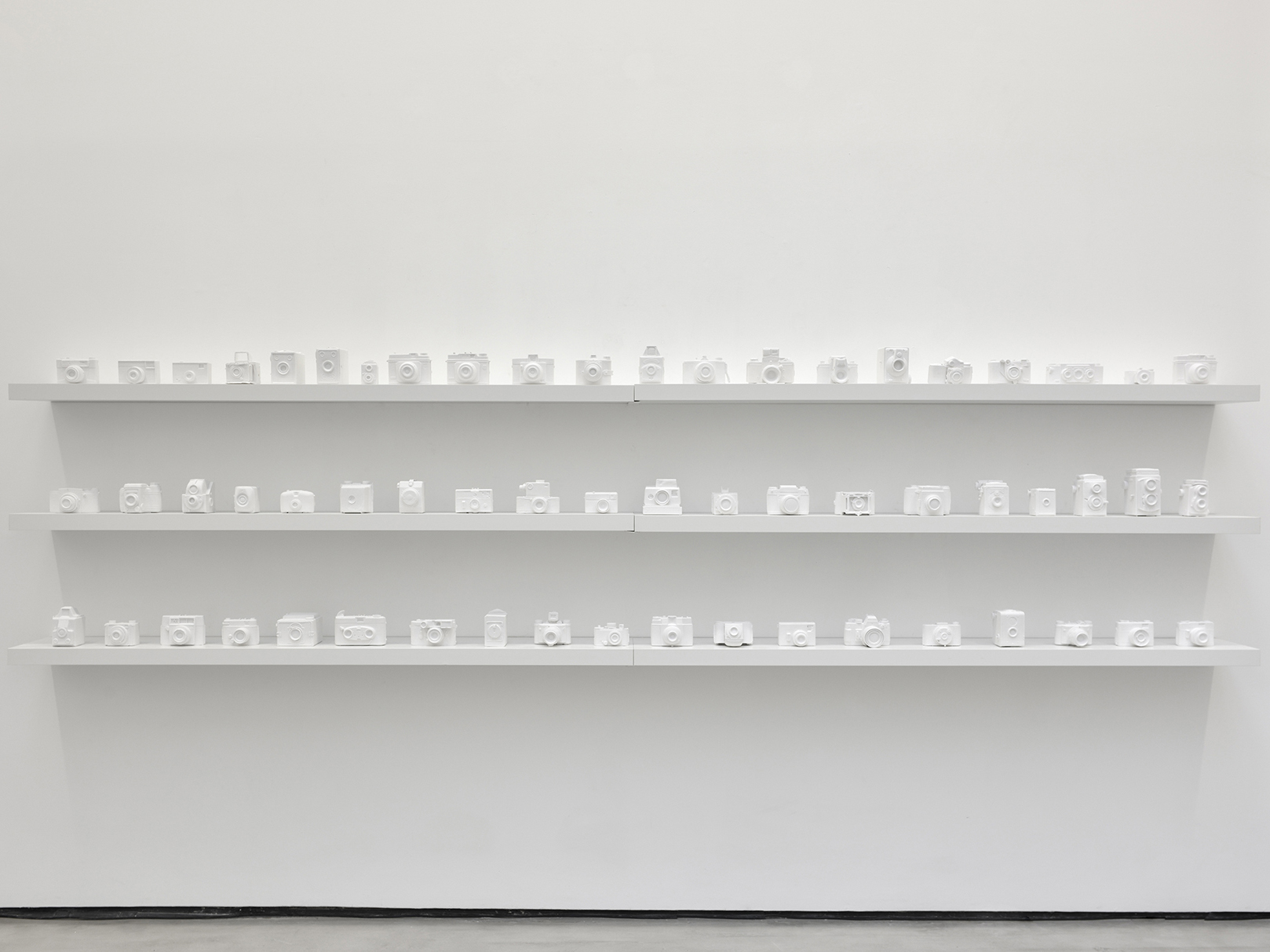ISABELLE LE MINH ▼▼▼ WORKS
STASE
2023
--------------------------------------------------------------------------------------------------------
Installation: set of 3D prints (selective laser sintering)
Various sizes





This installation questions the museum status of cameras that are now obsolete, while at the same time shedding light on a little-known stage in their manufacture: prototyping. Dresden's Museum of Technology holds a dizzying amount of cameras, carefully classified by brand and type and featuring an impressive variety of designs, but it also possesses plaster prototypes reminiscent of sculpture casts, such as those found in the glyptotheques of archaeology or antiquities cabinets. Casting works of art is a practice that became widespread in the 19th century in order to preserve a copy of artworks and for study purposes. Originally produced with lost-wax, in plaster or elastomers, molding increasingly calls on new technologies, such as high-definition three-dimensional digitization.
I wanted to reproduce a selection of these devices in plaster, to produce forms that relate as much to the prototype as to the archaeological ruin - often perceived as an enigma of the past whose origin and meaning we seek to understand. I also wanted to highlight the incredible range of their formal variations, as I had done with the Objektiv series (2015).
So I have been scaning - not without difficulty - a selection of cameras and had them printed using 3D printing (powder sintering). In this way, each camera, designed to reproduce the world in two dimensions (with all the loss of information this implies) is itself reproduced in three dimensions (with all the loss of information that implies: a monochrome block with a single texture. As if, in this mise en abyme of the reproduction tools, the addition of a further dimension were achieved at the sacrifice of the other parameters. The final installation is made up of these 1:1 3D replicas, with the idea of reducing to silence and to a ghostly presence these objects that were originally conceived to grasp, think and transform the world.